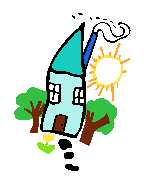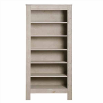Уроки "Мій будинок" за підручником Карпюк О.
Level – A1
Nataliia YERMAK, a teacher of English,
Korosten, Zhytomyr region.
Тheme: Мy House. Мy Flat.
Objectives: - to activate pupils’ vocabulary on the topic;
- to develop pupils’ pair and individual communicative skills;
- to introduce grammar material: alternative questions;
- to develop the pupils’ imagination, memory.
Equipment: textbook, a tape recorder, pictures, handouts for pair work, the recording of the song “Happy House!,” crossword, video “Primary I – Dictionary”.
Procedure.
I. Warming up
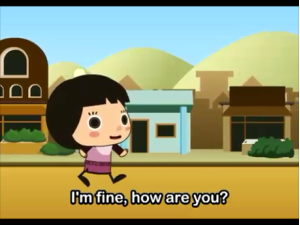 Greeting. Aim.
Greeting. Aim.
![]() Song “Good Morning”, Video.
Song “Good Morning”, Video.
Good morning, good morning,
And how do you do? 3 times
Good morning, good morning,
I’m fine how are you.
![]() Good morning, good morning,
Good morning, good morning,
And how do you do? 3 times
Good morning, good morning,
I’m fine how are you.
2. Discussing the pupils’ mood.
T: Dear children, I hope you are well today. Take a card according to your mood and show it to me, please. (Children pick the cards).





T: Today we’ll speak about the place where we live. By the end of the lesson you’ll be able to describe in general your house/flat.
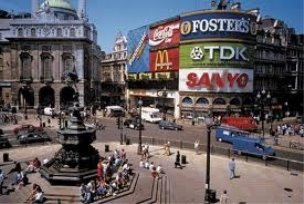 3. Phonetic Drill Listen to the poem “Some People Live in the Country”
3. Phonetic Drill Listen to the poem “Some People Live in the Country”
Some people live in the country
Where the houses are very small.
Some people live in the city
Where the houses are very tall.
But in the country where the houses are small
The gardens are very big.
And in the city where the houses are tall,
There are no gardens at all.
3. Singing a song “Happy House”

Happy house , happy house,
We live in a house.
Happy house, happy house,
In a happy house.
Happy house , happy house,
We live in a house.
Happy house, happy house,
In a happy house.
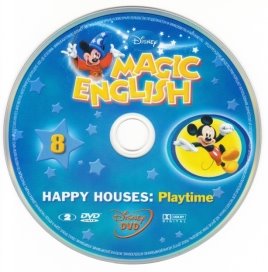
A house with a wall,
A big wall.
A house with a door,
A little door.
A house with a window,
A window.
Happy house , happy house,
We live in a house.
Happy house, happy house,
In a happy house.
Happy house , happy house,
We live in a house.
Happy house, happy house,
In a happy house.
A house with a door,
A big door.
A house with a window,
A window.
A house with a roof,
A roof.
Happy house , happy house,
We live in a house.
Happy house, happy house,
In a happy house.
II. Main Part
1)Reading the dialogue. Make up your own dialogues, using
questions:
- Do you live in a village or in a city?
- Are there many blocks of flats in your neighborhood?
- Do you live in blocks of flats or in the house?
- What floor do you live on?
- Are there nice parks in your neighborhood?
-
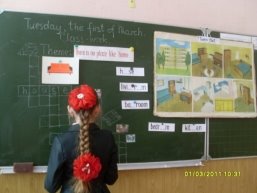 Are your neighbours good people?
Are your neighbours good people?
2. Brainstorming
Read and say what it is:
- A place where we can live.
- A thing on which to sit at the table.
- A room where we can wash our face and hands.
- A thing on which to sit in front of the TV.
- A room where we can cook.
- A thing on which to sleep.
- A room where all the family usually watch TV in the evening.
- A thing which is usually on the floor.
3. Physical exercises “Clap your hands together”.
4. Writing
Choose and fill in the correct words:
1) Where do you live? – In the city.
a)What b) When c) Where
2) ______does it look like? – Oh, it’s ver big !
a) Who b) What c) How
3) ______room is this? – It’s Mary’s.
a) Who b) What c) Whose
4)_______you live in a house or in a fiat? – In a house.
a)Does b) Are c )Do
5)______ he like to live in the country? – I think, he does.
a) Do b) Is c) Does
5.Speaking Role- play
This is Jim from the USA. Ask him about the place he lives in.
You : Do you live in a …or…?
Jim: …
You: What is it like?
Jim: It’s… There are … There is…
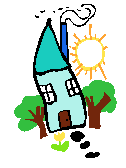 7. Vocabulary Revision. Find the words.
7. Vocabulary Revision. Find the words. 
|
T |
A |
B |
L |
E |
Q |
X |
W |
V |
V |
|
Q |
W |
F |
L |
A |
M |
P |
W |
V |
Y |
|
D |
E |
S |
K |
Z |
Z |
F |
W |
K |
L |
|
Q |
W |
F |
V |
Z |
S |
H |
E |
L |
F |
|
Y |
B |
E |
D |
Y |
W |
W |
W |
M |
N |
|
F |
F |
H |
K |
D |
S |
R |
O |
O |
M |
|
C |
H |
A |
I |
R |
W |
C |
R |
T |
U |
|
X |
X |
Y |
B |
M |
F |
L |
A |
T |
M |
|
X |
Q |
W |
C |
L |
O |
C |
K |
W |
W |
|
C |
D |
O |
O |
R |
Y |
Y |
Y |
Y |
M |
|
F |
F |
T |
R |
F |
L |
O |
O |
R |
F |
|
T |
E |
L |
E |
P |
H |
O |
N |
E |
Q |
|
P |
L |
U |
U |
L |
P |
W |
A |
L |
L |
|
W |
I |
N |
D |
O |
W |
V |
V |
V |
I |
|
C |
H |
B |
N |
B |
E |
N |
C |
H |
W |
|
H |
L |
H |
O |
U |
S |
E |
V |
G |
|
|
Z |
A |
R |
M |
--- |
C |
H |
A |
I |
R |
8. Listening to a story “Welcome to our House”, Video “I – Dictionary”.
T: Name the rooms you will listen in the story

You knock at your grandparents’ door
The door opens.
You are in the hall. You listen. Nothing.
Grandma and Grandpa are not there.
You open the next door.
You are in the kitchen now.
You look around.
Grandma and Grandpa are not there.
You open the next door.
You are in the dining room now.
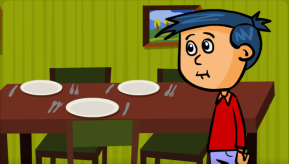 The plates are on the table.
The plates are on the table.
But Grandma and Grandpa are not there.
You open the next door.
You are in the bedroom now.
Grandpa’s glasses are on the table.
But Grandma and Grandpa are not there.
You open the next door.
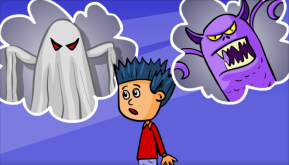 You are in the living room now.
You are in the living room now.
There is somebody behind the curtains.
You are scared!
Is it a ghost? Is it a monster?
Welcome to our house, Tommy!
Wow, This not a ghost!
This is not a monster!
It’s you Grandma! It’s you Grandpa!
Let’s play hide – and – seek again, Tommy!
III. Summing up. Home Assignment.
Home task: Learn the poem “Some People Live in the Country” by heart.
Summarizing.
T: Today we spoke a lot about houses and flats and things in them.
Now think and tell a few words about your house/flat. Is it big/small/nice/clean/light/comfortable/old/modern. Your marks for the lesson are…
Тheme: My House. My Room.
Objectives: -to introduce new vocabulary;
-to develop pupils’ pair and individual communicative skills;
-to develop the pupils’ imagination, memory;
-to practice listening skills;
-to expand pupils’ knowledge about customs and traditions of
Englishmen.
Equipment: the course book, pictures, cards, slides, a tape recorder.
 Procedure.
Procedure.
I. Warming up
1. Greeting. Aim.
Teacher: Good morning, children!
Pupils: Good morning teacher!
T: I am glad to see you! How are you?
Ps: We are fine and what about you?
T: I’m fine, too. Sit down and let’s start.
T: Today you’ll learn some new words on the topic and you’ll use them to describe
the rooms.
2. Warming up
T: Dear pupils! At night I had a fantastic dream! Like all Englishmen there was a fireplace in my house. Santa Claus came climbing down the chimney. He put presents into the children’s stockings. It is an English tradition to have a fireplace in the sitting room and in the dining room. Englishmen like to sit near the fireplace and drink tea.
II. Main Part
1. Presenting new vocabulary
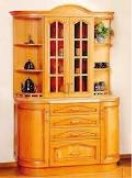 T: On the blackboard we can see some things which we have in our rooms. Point to the fireplace. This word consists of two words: fire and place, because a fireplace is a place for the fire. Many people in Britain like to have it in their houses. Point to the mirror. In which rooms can we have it? Point to the hall. As soon as we come into the house or a flat we get into the hall. Point to the cupboard/chest of drawers/bookcase/wardrobe. What do we usually keep there?
T: On the blackboard we can see some things which we have in our rooms. Point to the fireplace. This word consists of two words: fire and place, because a fireplace is a place for the fire. Many people in Britain like to have it in their houses. Point to the mirror. In which rooms can we have it? Point to the hall. As soon as we come into the house or a flat we get into the hall. Point to the cupboard/chest of drawers/bookcase/wardrobe. What do we usually keep there?
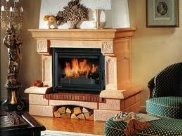

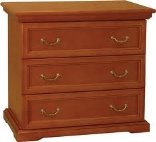
Game «Bingo»
Teacher gives cards and names the things of the furniture. If the pupil guesses, he turns over the picture. If all the pictures are overturned, the first pupil cries: “Bingo!” He is a winner.
2. Vocabulary and Practice
Gаme “Try to guess”
|
BINGO |
||
|
|
|
|
|
|
|
|
|
|
|
|
|
BINGO |
||
|
|
|
|
|
|
|
|
|
|
|
|
Look at the picture for a moment. Then cover it and name all the things you can remember. Use the words in the box.
|
BINGO |
||
|
|
|
|
|
|
|
|
|
|
|
|
|
BINGO |
||
|
|
|
|
|
|
|
|
|
|
|
|


про публікацію авторської розробки
Додати розробку

